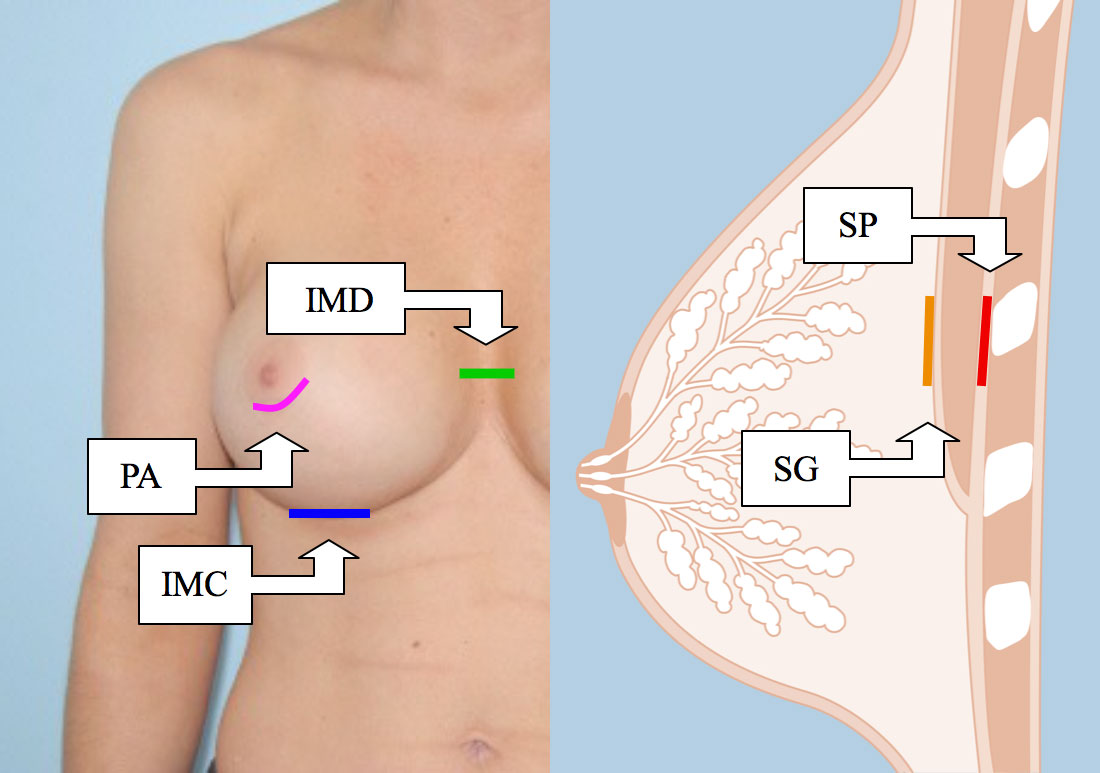Myths And Truths About Breast Augmentation – How To Make Sense Of The Information Available
There are a number of myths which are perpetuated by information obtained on the internet. Dr. Kimberly Short, an Indianapolis plastic surgeon, will present a series of articles to address some of these myths and outline her suggestions for making informed decisions regarding your breast augmentation.
Breast Augmentation Decisions

Incision location
The two most popular incisions for breast implant surgery
IMC = Inframammary crease incision
PA = Periareolar incision
IMD = Intermammary distance (separation between breasts)
Implant Placement
SP = Subpectoral (under the muscle)
SG = Subglandular (over the muscle)
All of the breast tissue is over the implant and is accessible for mammogram in both situations.
Reviewing Your Options
Based on her experience of 14 years and more than 5,000 breast implants, Dr. Kimberly Short will review four common incisions used for breast augmentation, different approaches employed for the placement of implants, and the variable implants available, along with discussing a number of the myths perpetuated regarding breast augmentation surgery.
If you are considering breast augmentation, be sure to follow Dr. Short’s blogs. As a board certified plastic surgeon specializing in cosmetic breast surgery, including breast augmentation and breast lifts, Dr. Short helps you sort through the wide range of information available and simplifies the pros and cons of each decision to be considered. Breast augmentation is a very personal decision and Dr. Short’s goal is to make sure that her patients have all the information they need to make informed and educated decisions about their breast surgery.
Challenging Myths
Here are a few of the myths regarding breast augmentation which dr. Short will address:
- Women are more likely to lose sensation when breast implants are placed through periareolar incisions.
- All breast implants should be placed under the chest muscle.
- Placing the breast implant under the muscle will “hold the implant up” and make the breast sag less.
- Implants are frequently ruptured with mammagrams.
- Silicone breast implants are more likely to rupture than saline breast implants.
- Breast cancer is more likely in women who have breast implants.
- Women cannot breast feed after they have breast implants placed.
- Women should wait until after they have all their children before having a breast augmentation.
- Breast implants have to be replaced every 10 years.
- It is always obvious when a woman has had a breast augmentation because her breasts look “fake.”